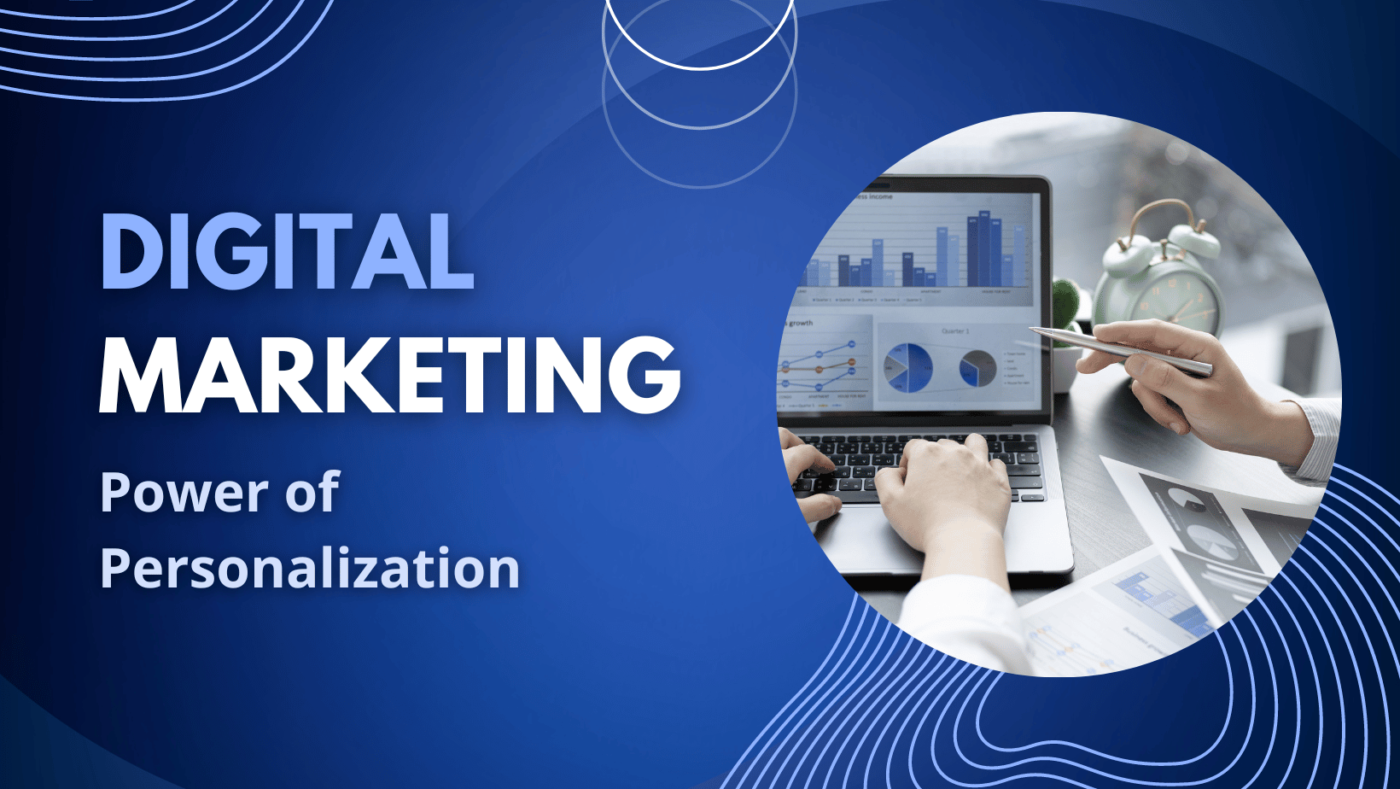Personalization in digital marketing involves tailoring a user’s experience based on their individual preferences, interests, and behaviors. The goal is to provide a more engaging, relevant, and personalized experience for the user, which can lead to increased engagement, conversion, and loyalty.
Here are some strategies for creating customized user experiences:
- Collect Data: The first step to personalization is collecting data about your users. This can include information such as their demographics, browsing history, purchase history, and social media activity. Use this data to understand their preferences, behaviors, and interests.
- Segment Your Audience: Once you have collected data, segment your audience into groups based on their shared characteristics. This will allow you to create targeted messages and experiences for each group.
- Create Personalized Content: Use the data you have collected to create personalized content for each segment. This can include personalized product recommendations, targeted emails, customized landing pages, and personalized ads.
- Use Personalization Tools: There are many personalization tools available that can help you create customized experiences for your users. These tools use data and algorithms to deliver personalized content and experiences in real-time.
- Test and Optimize: Personalization is an ongoing process. Continuously test and optimize your personalized experiences to ensure that they are effective and relevant.
- Start with a Personalized Welcome Personalizing the user experience can start right from the moment a user visits your website or platform. A personalized welcome message, featuring the user’s name, location, or their recent activity on your website, can be an excellent way to grab their attention and make them feel valued. Such a message could be displayed in a pop-up, or as a banner across the top of the page. This is a small but effective touchpoint that can set the tone for the rest of the user’s experience.
- Personalize Recommendations and Offers Personalized product recommendations and offers are a great way to increase user engagement and conversions. By analyzing the user’s purchase and browsing history, you can suggest products or services that they are likely to be interested in. You can also offer personalized discounts or promotions, which can be more effective than generic offers. This approach can help to build a stronger connection with the user, as they feel that you understand their needs and preferences.
- Use Personalized Email marketing is one of the most effective channels for personalization. By segmenting your email list based on user behavior or preferences, you can deliver more relevant and engaging content. For example, you could send targeted emails to users who have abandoned their shopping cart, offering them a discount or suggesting related products. Personalized emails can also be used to promote specific products or services based on the user’s interests or browsing history.
- Create Personalized Landing Pages Landing pages are a key part of any digital marketing campaign, and personalizing them can have a significant impact on conversion rates. By tailoring the content, images, and call-to-action based on the user’s behavior or interests, you can increase the relevance and effectiveness of the page. For example, if a user arrives on your landing page after clicking on a specific ad or email, you can customize the page to reflect the messaging and content of that ad or email.
- Use Personalization for Customer Support Personalization can also be a powerful tool for customer support. By collecting data on the user’s previous interactions with your support team, you can provide more personalized and effective assistance. For example, if a user has a history of technical issues, you can proactively offer them troubleshooting tips or connect them with a specialized support agent. This approach can help to build trust and loyalty with the user, as they feel that you understand their needs and are committed to providing the best possible experience.
- Use Personalization for Social Media Marketing Social media platforms offer a wealth of data on user behavior and interests, which can be leveraged for personalization. By tailoring your social media content and ads based on the user’s interests, you can increase the relevance and effectiveness of your campaigns. For example, you could target users who have shown an interest in a particular product or service, or create content that speaks directly to the user’s interests or pain points.
- Personalize Your Website Navigation Personalizing your website navigation can help to make the user experience more intuitive and efficient. By analyzing the user’s behavior and preferences, you can customize the layout and organization of your website to match their needs. For example, if a user frequently visits a specific section of your website, you could move that section to a more prominent location on the homepage. This can help to reduce friction and improve the user’s overall experience.
- Use Personalization for Account Management Personalization can also be used to improve the user experience within your account management system. By tailoring the dashboard, notifications, and alerts based on the user’s preferences and behavior, you can make it easier for them to manage their account and stay engaged with your platform. For example, if a user frequently uses a specific feature within your platform, you could make that feature more prominent within the dashboard or send notifications when there are updates or new features related to that feature.
- Consider the User’s Context Personalization can be even more effective when it takes into account the user’s context. This could include their location, time of day, or device they are using. By understanding the user’s context, you can tailor the experience to better meet their needs and expectations. For example, if a user is accessing your website from a mobile device, you could optimize the layout and content for a smaller screen size.
- Use Personalization to Build Trust and Loyalty Personalization can be an effective tool for building trust and loyalty with your users. By showing that you understand their needs and preferences, and by delivering personalized experiences that are relevant and engaging, you can create a deeper connection with your users. This can lead to increased loyalty, repeat business, and positive word-of-mouth.
- Be Transparent About Data Collection While personalization can provide many benefits, it’s important to be transparent about how data is collected and used. Users may be concerned about their privacy and may not want to share certain types of information. By being upfront about what data is collected, how it’s used, and how it’s secured, you can build trust and reassure users that their data is being handled responsibly.
- Use Personalization in Conjunction with Other Marketing Techniques Personalization should be used in conjunction with other marketing techniques, such as SEO, content marketing, and social media marketing. By integrating personalization into your overall marketing strategy, you can create a more cohesive and effective approach that reaches users at every stage of the buyer’s journey.
- Continuously Monitor and Optimize Personalization Efforts Personalization is an ongoing process that requires continuous monitoring and optimization. By analyzing the results of your personalization efforts, you can identify what’s working and what’s not, and make adjustments to improve the effectiveness of your campaigns. This could include testing different messaging, offers, or personalization techniques, or refining your segmentation strategy based on user behavior and preferences.
- Don’t Overdo It While personalization can be a powerful tool, it’s important not to overdo it. Bombarding users with too much-personalized content or messaging can feel invasive or overwhelming. It’s important to strike a balance between personalization and respecting the user’s privacy and autonomy. Start with small, targeted personalization efforts and gradually build up based on user feedback and engagement.
- Consider the Long-Term Benefits of Personalization require an investment of time, resources, and technology. However, the long-term benefits can be significant, including increased engagement, loyalty, and lifetime customer value. By focusing on the user’s needs and preferences and delivering personalized experiences that meet those needs, you can create a powerful competitive advantage and drive sustainable business growth.
- In summary, personalization is a powerful tool for digital marketers to create customized user experiences that can lead to increased engagement, conversion, and loyalty. By collecting data, segmenting your audience, creating personalized content, using personalization tools, and continuously testing and optimizing, you can create a personalized experience that resonates with your users.
In conclusion, personalization is a powerful tool that can help digital marketers create customized user experiences that drive engagement, conversion, and loyalty. By collecting data, segmenting your audience, creating personalized content, and continuously monitoring and optimizing your efforts, you can create a more effective and impactful marketing strategy. While personalization requires an investment of time, resources, and technology, the long-term benefits can be significant, including increased user engagement, loyalty, and lifetime customer value.

